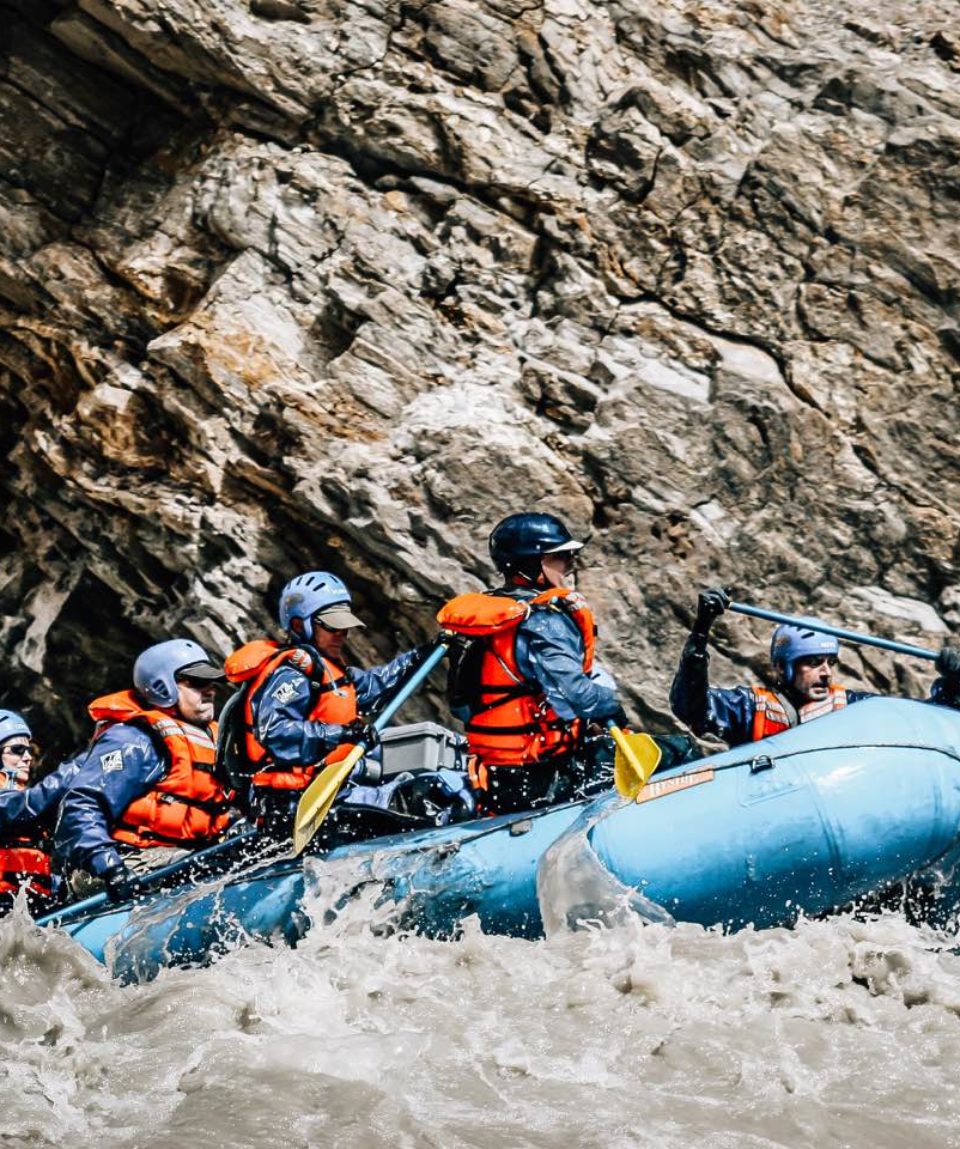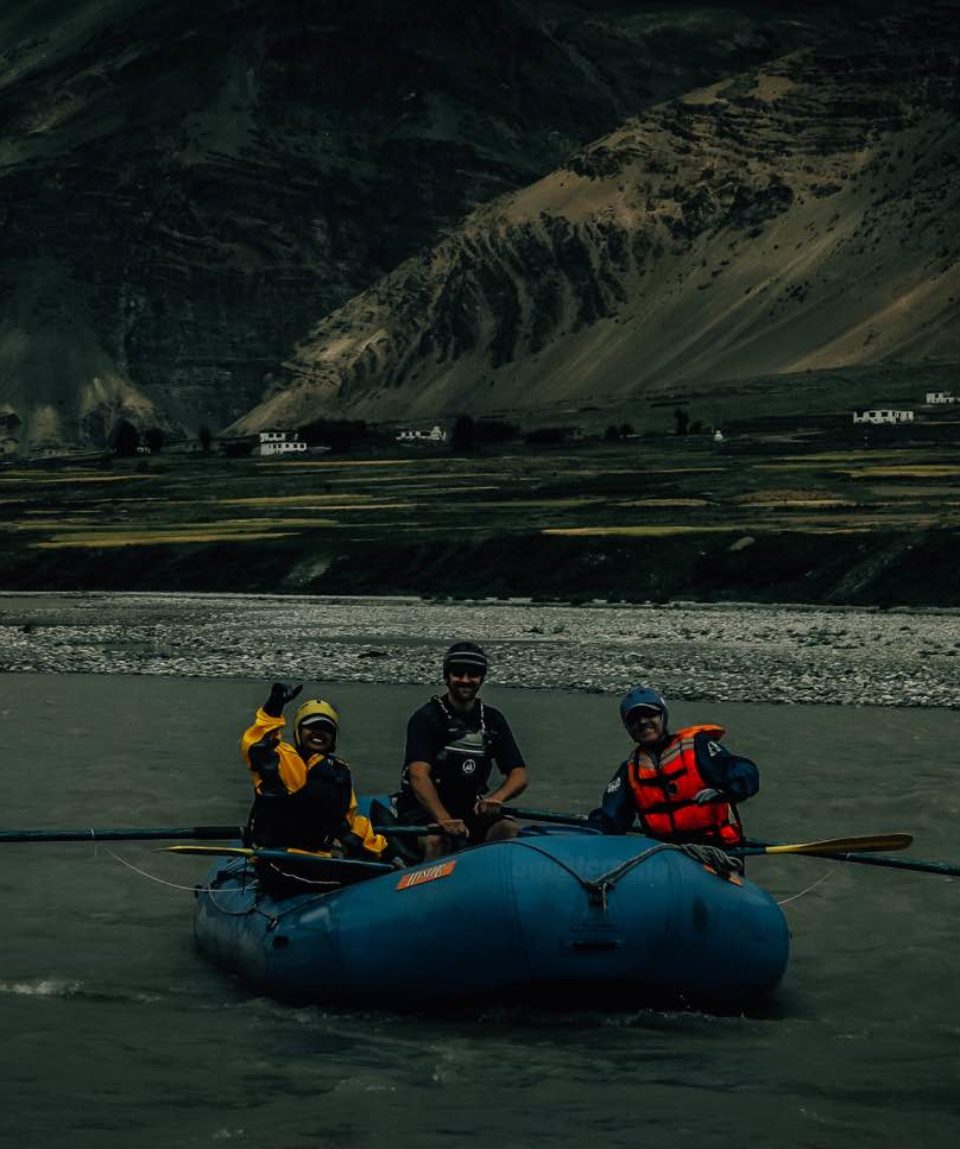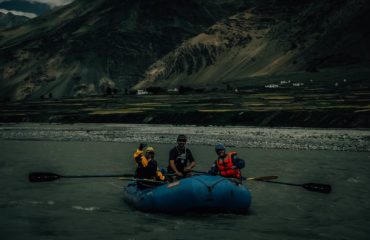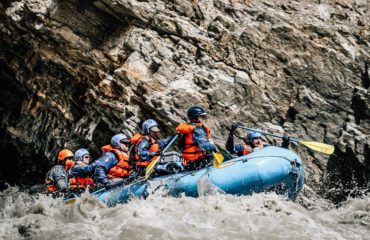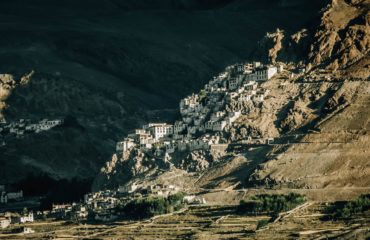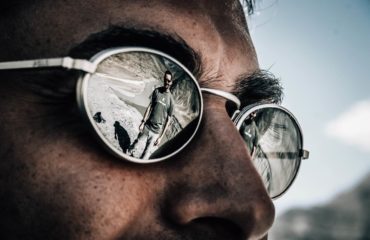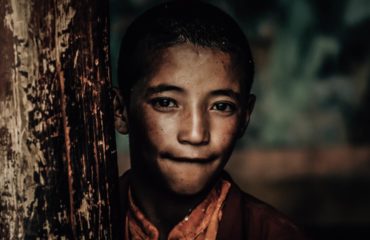The Zanskar River – India’s Best Kept Secret
fromOur trip to the remote northern part of the country combines the best of what India has to offer. It offers rich culture, stunning sceneries and spectacular white water rivers.
Our adventure begins with an awe-inspiring flight over the Himalaya. If the flight is on a clear day, you can see as far as K2 therefore, make sure to keep your cameras in hand. We will share our knowledge of the beautiful culture, customs and people in this traditionally Buddhist area and explore Leh. Leh is the largest town in the region, and from here you can buy beautifully handcrafted souvenirs.
Our journey to the river takes in magnificent roads and mountain passes, giving rise to spectacular scenery. In our ever-changing and populated world, this trip allows a chance to escape the masses (yes in India) and explore the unexplored.
The river is full of surprises; therefore, be ready for a real adventure. The river passes through magnificent canyons, fun-filled rapids and has incredible waterfalls to visit. Many feel this trip is even more spectacular than the Grand Canyon. Come and explore this fascinating part of India, the Zanskar River and see why everyone is talking about this trip!
- Reviews 0 Reviews0/5
- Style Type
- Expedition
- India
- Rafting
-
- Level Challenging
- Group Size Medium Group
Our adventure begins with an awe-inspiring flight over the Himalaya. If the flight is on a clear day, you can see as far as K2 therefore, make sure to keep your cameras in hand. We will share our knowledge of the beautiful culture, customs and people in this traditionally Buddhist area and explore Leh. Leh is the largest town in the region, and from here you can buy beautifully handcrafted souvenirs.
Our journey to the river takes in magnificent roads and mountain passes, giving rise to spectacular scenery. In our ever-changing and populated world, this trip allows a chance to escape the masses (yes in India) and explore the unexplored.
The river is full of surprises; therefore, be ready for a real adventure. The river passes through magnificent canyons, fun-filled rapids and has incredible waterfalls to visit. Many feel this trip is even more spectacular than the Grand Canyon. Come and explore this fascinating part of India, the Zanskar River and see why everyone is talking about this trip!
- India travel adviceby GOV.UK on 13/09/2024 at 11:00 am
This travel advice was reviewed for style and accuracy.
- Airport Transfers to and from the airport in Delhi.
- Accommodation on the first and last nights of the trip as described above in Delhi.
- Airport Transfers to and from the airport in Leh.
- Hotels in Leh and Kargil.
- Return flights Delhi to Leh
- International and local guides
- Accommodation will be on a share twin basis with someone also on your river trip. Single Supplements are available.
- All transfers to and from the river.
- All meals from breakfast on Day Two to lunch on Day Fourteen. Breakfast on Day 15 also included. We can cater for any dietary requirements, just let us know!
- All necessary rafting equipment, including the best in buoyancy aids, helmets, wetsuits and spray jackets. Plus water tight pelicases for your cameras.
- Tented accommodation whilst on the river and for the last 2 days of your journey to the river..
- All camping equipment excluding sleeping bags
- Fully qualified, experienced river guides and safety kayakers who are extremely professional and make up one of the most experienced river teams in the World. They make every effort to make your trip one of the most memorable, optimising your fun without compromising on your safety. They all hold advanced first aid qualifications and in the unlikely event of an injury they have the expertise and professionalism to deal with it
- All necessary permits and licenses.
- Not included are international flights, visas, departure taxes, travel insurance, inoculations, sleeping bags, video or DVD of your trip, alcohol, personal items or gratuities. You will also need to budget for meals in town that are not included in the price and any extra accommodation outside what is provided. Contact us for a flight-inclusive ATOL protected package.
- Day 1 Arrive to Delhi
- Day 2 Take flight from Delhi to Leh.
- Day 3 Explore Leh and the Surrounding Area
- Day 6 Drive to Remala
- Day 7 Start Raft Near to Karsha Gompa
- Day 8 Raft from Karsha to Pidmo
- Day 9 Craft to Nyerak
- Day 10 LAYOVER DAY
- Day 11 Camping at Lamaguru
- Day 12 Rafting From from Lamaguru to Nimu
- Day 13 Flight from Leh to Delhi
- Day 14 Departure
- Day 1 Extension: TAJ MAHAL
- Day 2 Visit Fatehpur Sikri
In Delhi, we are able to book you comfortable centrally located accommodation. We can also arrange transfers from the airport to your hotel. The cost of your hotel in Leh is included before and after the trip
You will be able to leave any clothing or baggage that you don’t require on the river at your hotel in Leh whilst you are on the river and collect this again when you get off your trip. All valuables will be locked and kept in the hotel safe. Please do not take valuables such as passports, money, credit cards and flight tickets on the river with you on the river!
Most of our clients are aware that adventure travel to far flung lands can pose it’s own interesting idiosyncrasies common in the developing world. Very few things happen fast, and you’ll find a smiling face and a little patience work wonders in these countries for getting things accomplished. We recommend a few phrases of the local language will get you a long way (this is sent to you in your pre departure pack). Our trip leaders are on hand if you have any queries about the country you are visiting.
On receipt of your deposit and booking form, we’ll send you a suggested equipment list. This can also be found on our website, on the page relating to the country you are visiting. If you require some of the items suggested for your trip, they can also be purchased off our website or a limited number of items from our river teams. 30 days prior to your trip departure, you’ll be sent a pack with a few “goodies” including facts about the country you are visiting, who your guides are, along with what you might expect on your trip.
An adequate insurance policy is required to cover you whilst white water rafting. This must also include medical evacuation and repatriation in the unlikely event you are injured on your trip. North Americans can obtain a policy through www.globalrescue.com. For travel insurance purposes for this trip, you should get coverage for up to and including Grade IV rapids.
What better way of travelling down a river than by your own paddle power and gravity? Water By Nature takes great care of the environment we visit and carry out all our waste that we take on trips. We keep groups small to not impact the environment and to give you the chance to chat with all the interesting people on your trip.
On many of our departures we take along a trip cameraman who will capture your trip through their eyes. This will capture not only you paddling through white water, but have local wildlife, scenic shots and the adventures around camp. These can be pre-ordered or they can be ordered in destination. When edited, they will be put to music and enclosed in the DVD case for your memory.
You’ll need to get a visa before travelling to India. You can find further information about how to apply on the Indian High Commission website.
Make sure you get the right visa for your travel and that it’s valid for the purpose and duration of your stay. If you enter India on the wrong visa, you could be detained on arrival and you may be deported and blacklisted, meaning that you can’t enter India again. Make sure you meet entry requirements. Tourist visas can’t be extended while in India.
You should be aware that there have been changes made by the Indian Government, on visa formalities for foreigners who are hospitalised in India, when travelling on a short-term tourist visa. If you or someone you are travelling with is travelling on a tourist visa and is hospitalised, we would advise you to immediately get in touch with the local Foreigners Registration Office (FRO) to check if visa conversion is required.
From 1 April 2017, the length of stay on an e-visa has been increased from 30 days to 60 days with double entry on tourist and business e-visa and triple entry on medical e-visas. This means you can stay for or re-enter within 60 days of the date of your first entry into India on your e-visa. However, you must leave the country before your visa expires, irrespective of when or how many times you enter. When you arrive at the airport, your passport will be stamped and an expiry date for your e-visa will be handwritten by an Immigration Officer. Please be aware that 60 days is not automatically equal to two calendar months. Check the date that is written on your passport and make sure you leave the country before your visa expires.
Holders of passports endorsed ‘British citizen’ who meet the eligibility criteria can apply for a double entry e-Tourist Visa (e-TV) to enter India at certain designated airports. You can find more information about the eligibility criteria on the government of India’s e-Tourist Visa website. Beware of fake websites offering the e-TV service.
You should check carefully whether or not you’re eligible for an e-TV before you apply. British subject, British protected person, British overseas citizen, British national (overseas) and British overseas territories citizen passport holders aren’t eligible to apply for an e-TV.
India’s Bureau of Immigration has announced that with immediate effect, foreign nationals who arrive at an Indian port holding non-machine readable passports will be denied entry. Carriers who transport foreign passengers holding non-machine readable passports may be subject to a fine.
To transit through India you will need a transit visa. You can find more information on the Indian Immigration Bureau website.
The previous rule of no re-entry on the same visa for 2 months after leaving India no longer applies to foreign nationals (including British) coming to India except in case of nationals of Afghanistan, China, Iran, Pakistan, Iraq, Sudan, Bangladesh, foreigners of Pakistan and Bangladesh origins and stateless persons. e-Tourist Visas can now be used for double entry into India.
Foreign nationals arriving in India on long term multiple entry visas must register with the nearest Foreigners Regional Registration Officer (FRRO) within 14 days of arrival.
If you overstay your visa you must report in person to the FRRO or Superintendant of Police you registered with to get permission to exit the country. You will be fined and may be prosecuted or detained and later deported. If you have overstayed your visa but did not need to register you must report to the nearest FRRO or Senior Superintendant of Police. See the Indian Immigration Bureau website for more information.
Applicants of Pakistani origin
All applicants of Pakistani origin who hold dual British-Pakistan nationality must apply for an Indian visa on their Pakistan passport. Those who have either renounced their Pakistani nationality or cancelled their Pakistani passport would need to submit documentary proof of this.
Processing time for visa applications received from persons of Pakistani origin will be 7-8 weeks or more.
Processing time for applications from those holding dual British-Pakistan nationality will be substantially longer.
For further details see the Indian High Commission website.
Passport validity
Your passport must be machine readable, with 2 blank pages for your visa and valid for a minimum of 180 days at the time of your visa application. However, the guidelines regarding passport validity on arrival in India are unclear. To avoid possible problems at immigration, make sure your passport is valid for a minimum of 180 days at the time of entry into India.
Airport tax
User Development Fees (UDF) apply at many airports. The fees are around Rs.1,000 per international passenger and Rs.150 to 260 per domestic passenger. This should already be included in the cost of airline tickets. If for any reason the fee is not included in your ticket it will be collected at the airport check-in counter in Indian rupees.
Polio vaccination
If you travel to India from Pakistan, Israel, Kenya, Ethiopia, Nigeria, Afghanistan or Somalia you may be required to hold a valid polio vaccination certificate. Contact your nearest Indian Embassy or High Commission for further information.
Yellow fever certificate requirements
Check whether you need a yellow fever certificate by visiting the National Travel Health Network and Centre’s TravelHealthPro website.
Accommodation and C-Forms
Make sure you stay in accommodation that is licensed with the Indian authorities. Ask your accommodation provider whether they’re registered to file ‘C-Forms’ with the Foreigners’ Registration Office (FRO). You’re strongly advised to use accommodation that is registered with the FRO.
UK Emergency Travel Documents
UK ETDs are valid for entry to or exit from India with the relevant Indian visa. They are also valid for airside transit. However, a holder of an ETD will not be able to both enter and exit India using the same ETD. You should be aware that you will have to apply to the local authorities for an exit permit if you’re leaving India on a passport or ETD that is different to the one on which you entered. This must be done online, and you should factor this into your timeframe to leave India. For further information visit the FRRO website.
Overseas Citizen of India (OCI) card holders
In March 2016, the Government of India announced that OCI card holders will no longer need a visa to enter India. The ‘U’ visa sticker that was placed in the foreign passport of OCI card holders has been discontinued with immediate effect and you’ll no longer need to show this sticker to the immigration authorities when you enter and leave India. You’ll only need to present a valid passport and your OCI card. For more information, visit the website of the Indian Ministry of Home Affairs.
Please follow the link for the latest health advice



